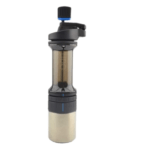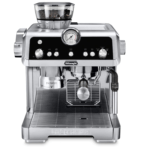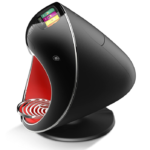How to Taste Espresso: A Beginner’s Guide
Tasting espresso is a very personal thing. Everyone has different preferences, flavors they enjoy, others not so much. However, identifying key components of this rich beverage is key to making it taste good.
If you’ve landed here, chances are you already know what espresso is and how to drink it, but are wondering how to taste it properly. The answer isn’t so simple and can seem much more complicated if you’re a beginner.
In this guide, we hope to answer all questions surrounding tasting espresso. Let’s dive in!

Key Things to Look Out For When Tasting Espresso
There are a few things to look out for when espresso tasting. Being able to pin-point the following will help you become a better critique and understand what you’re drinking:
- Aroma
- Body
- Bitterness
- Acidity
- Sweetness
- Finish
These six elements will all help you decipher the question: how does espresso taste. Being able to pinpoint what your taste is is key to making quality espresso at home. And, it makes it more enjoyable to drink a shot of espresso at a cafe as you’ll be able to discern the quality of the shot. While this is easy for experts and coffee critics, it’s a lot more complicated for beginners.
Aroma
Before your espresso-filled mug even touches your tongue, you’re going to be greeted by an aroma. This is one of the key indicators of whether you’re going to enjoy your cup or not. It also hints at the flavors you’ll encounter.
In this first step, take time to breathe in the aroma. Enjoy the tones of caramel or toffee. Is the smell unusual? Does it feel familiar? Does it remind you of a certain food? All of this will have a direct impact on how you interpret the rest of your cup.
Body
The body of your espresso refers to the density of it on your tongue. Some textures are rich and heavy, while others are more on the airy side. The body varies significantly – it could be oily, juicy, syrupy, or creamy. To evaluate these flavors, let the espresso sit on your tongue for a bit. Feel the texture and think about what it reminds you of.
Bitterness
Is espresso bitter? You bet it is!
This is a more concentrated form of coffee; therefore, it’s going to taste much more bitter. Bitterness also depends on how beans are roasted, water temperatures, extraction time, etc.
Do you remember the first time you had a drink of beer? You may have noticed that burning sensation or the bitter taste. You definitely weren’t used to the flavors, but with time, they grew on you. It’s the same concept with espresso tasting. At first sip, the flavors of espresso are quite powerful – you have bitterness mixed with extremely concentrated flavors.
Note: If you experience too much bitterness or an unpleasant lingering aftertaste, this is typically an indicator of over-extracted coffee.
Acidity
Acidity is heightened during espresso extraction. Think of acidity as that taste you get from limes or lemon juice. These fruits have higher acidity levels than others, like bananas.
When making espresso, you want to nail down the acidic level in your brew. Too much will make your face scrunch up and mouth pucker (like sucking on a lemon wedge). Too little acidity may leave your cup tasting flat.
Note: If your cup is too aggressive or sour, this is a sign of under-extraction.
Sweetness
Now that we’ve got the bitter and acidic elements out of the way let’s talk about sweetness. Sweet coffee flavors are there to balance out the bitterness and acidity – not only in espresso but any type of coffee. Your shot of espresso should have a slight yet noticeable sweetness to it. This sweetness comes from the roasting process of coffee beans designed to enhance the sweetness in caramel or sugary tones.
Finish
What do you taste after you’ve taken a sip of espresso? What’s the lingering aftertaste like?
A good finish should be long-lasting and resemble something you like (such as a sweet fruit of chocolate). Savor the finish before you make an overall decision on the quality of your brew. A cup with a good finish will leave a positive final impression, hence the importance of it!
Final Tips for Tasting Espresso
Keeping the above in mind will help you better identify what you’re drinking.
- Expand Your Palate. Tasting more food will better help you identify flavors. Eat fruits, juices, chocolates, and candies.
- Compare and Contrast. Taste different shots of espresso side by side. Making immediate comparisons will help hone the notes, further identifying what you like and don’t like.
- Drink Water. If you’re tasting several espressos in a row, take small sips of water in between. This will help cleanse your palate.
So, with these espresso tasting tips in mind, go out there and keep experimenting with different espressos!





